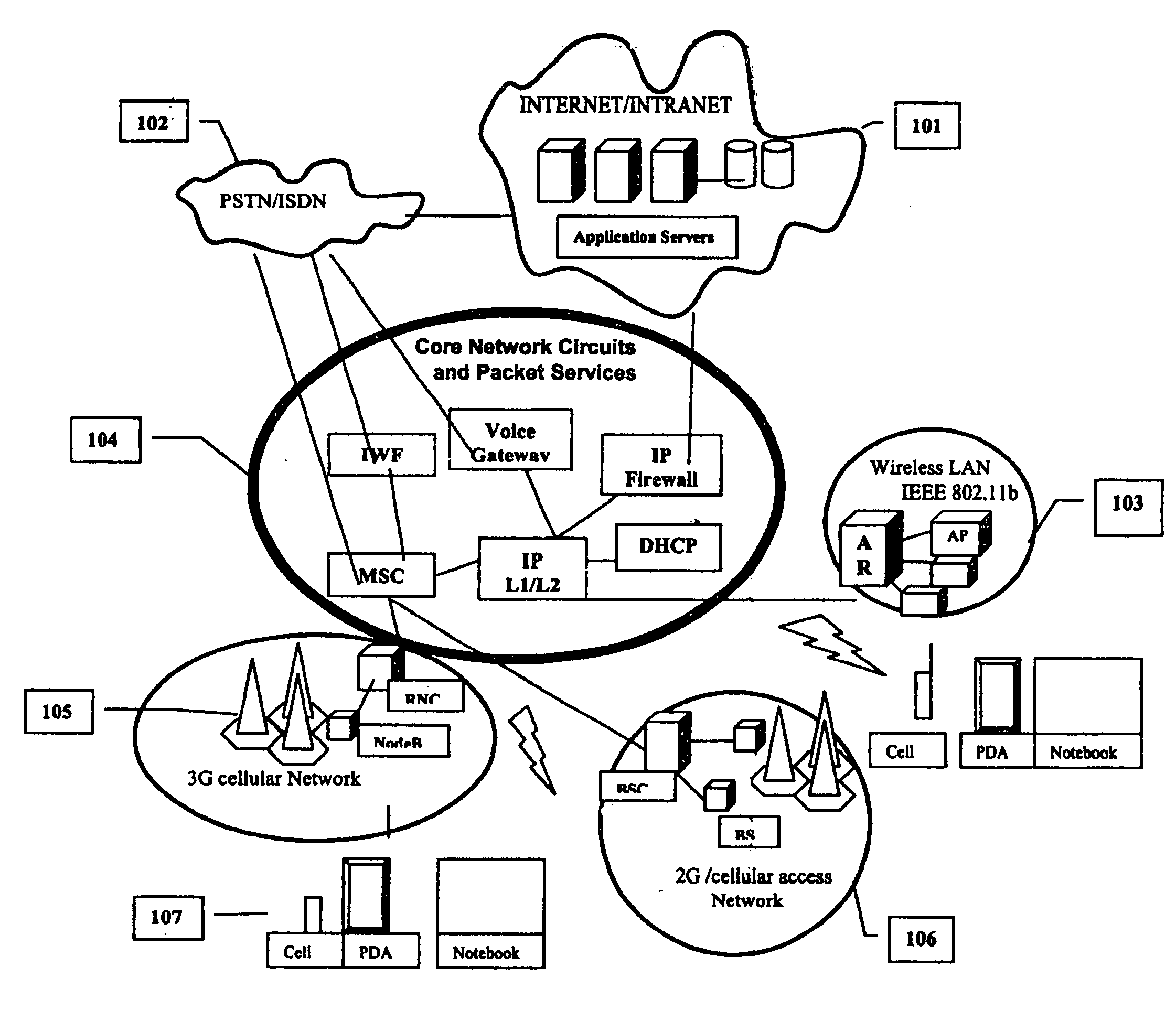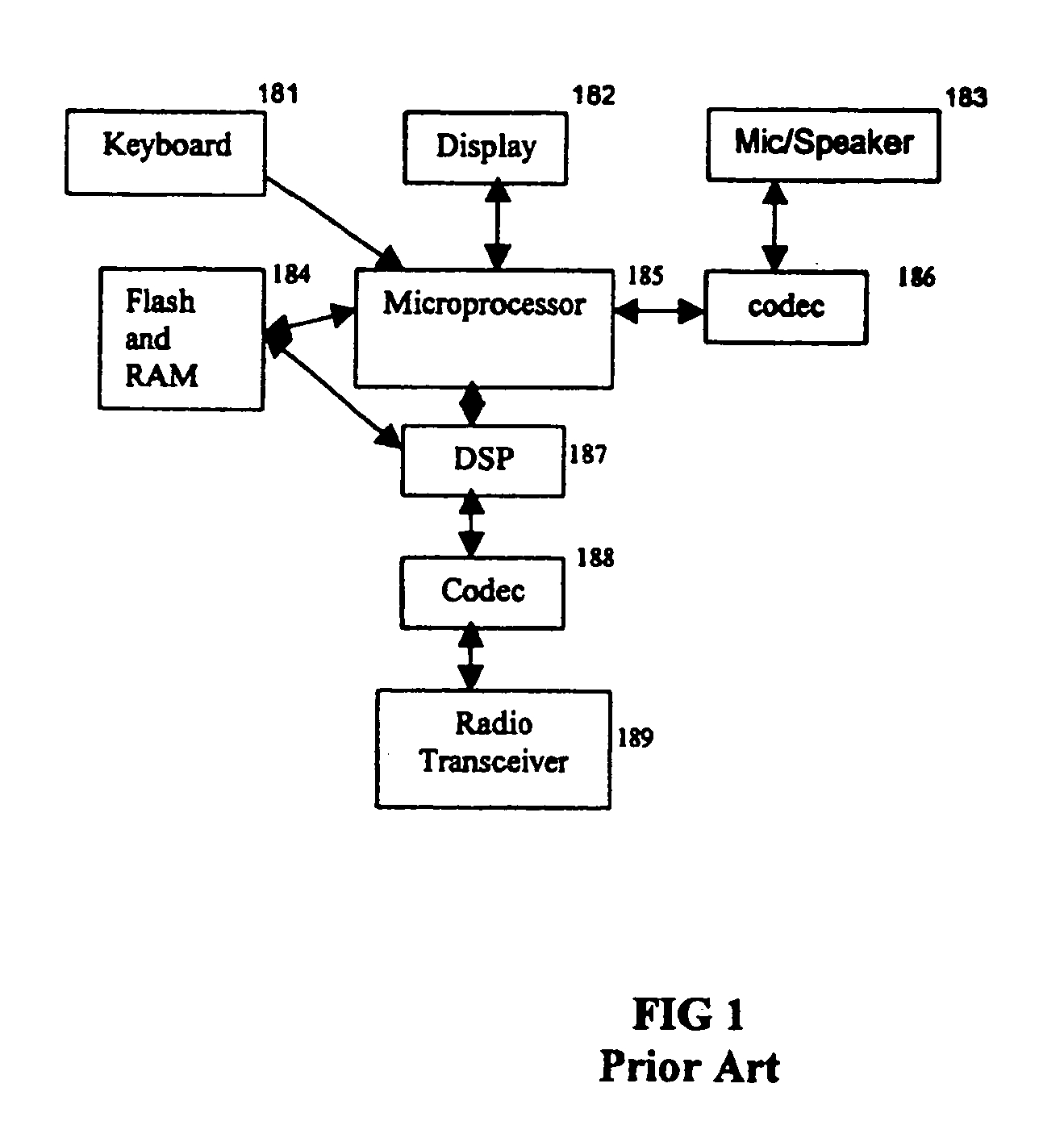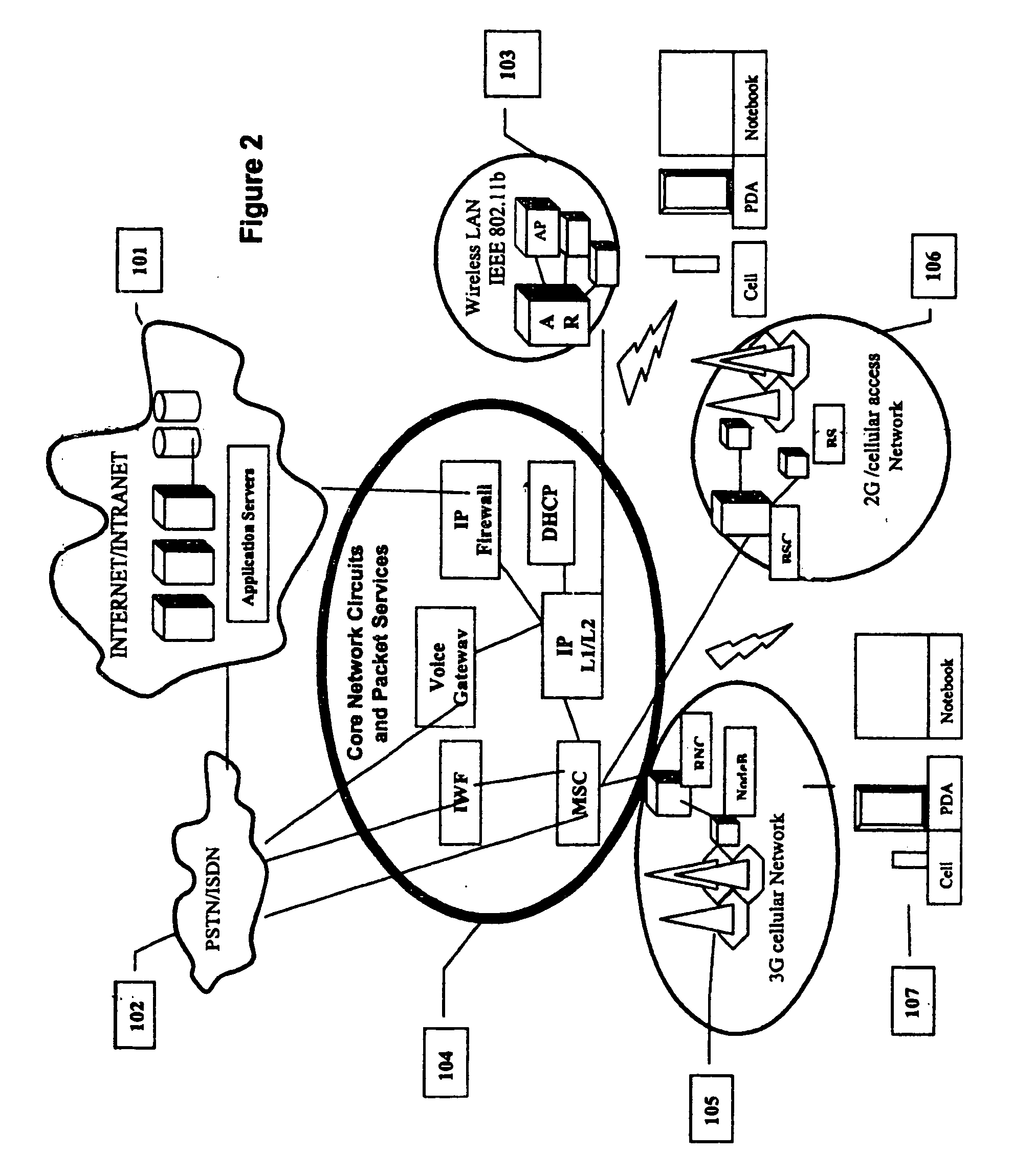Architecture and protocol for a wireless communication network to provide scalable web services to mobile access devices
a wireless communication network and web service technology, applied in the field of communication, can solve the problems of low cost, no protocol is ubiquitous, and typical handheld communication devices (e.g. cellular phones or pdas) are relatively complex, and achieve the effects of low cost, large data storage, and low power hand-held devices
- Summary
- Abstract
- Description
- Claims
- Application Information
AI Technical Summary
Benefits of technology
Problems solved by technology
Method used
Image
Examples
example 1
A Voice / Telephony Application using VoIP
[0055] A user has a minimal mobile device incorporating an Application Specific Device (ASD) and a Software Defined Radio (SDR) transceiver connected to a headset with a custom controller (see FIG. 5). This user can avail of web applications in the following manner: (as shown in FIG. 8)
[0056] Step 1. The user turns on the device and thus its radio transceiver.
[0057] Step 2. The radio establishes contact with the nearest Base Station using the appropriate air interface e.g. the available RF protocol and requests a network connection.
[0058] Step 3. The Base Station queries the device for its “Device Type”
[0059] Step 4. The device identifies itself as a “Voice Only” class mobile device. The Base Station passes the request to the Base Station Controller. (BSC)
[0060] Step 5. The Base Station Controller (BSC) proceeds to issue a DHCP address to the device and also informs the Message Switching Center (MSC) about the device and its associated DH...
example 2
A Data Access Application using a “Voice Only” Device
[0067] The same steps outlined in the previous example would be executed to establish a TCP / IP based link with the specific application URL.
[0068] In this case because the device type is known to be a “Voice Only” device it will not accept any text or graphical input. The application interface now gets routed through a CPS that provides voice to text, and text to voice translation. Clearly graphics cannot be supporte don this type of device. However most data based applications such as e-mail, SMS, news delivery, stock quotes etc. can be easily supported. Thus the application gracefully scales the features available to a specific mobile access device. The user is only exposed to the features that this mobile device can support.
example 3
Access using a PDA Type Device that can Support Graphics
[0069] The same steps as before would be followed to establish the TCP / iP link. IN this case however, the CPS / DPO program pair knows that mobile device has graphics capability and will therefore present data in the format supported by the specific device. A device of this sort would also be capable of supporting voice as well as data applications.
[0070] An example of the protocol stack required to support an IS-95 cdma or CDMA 2000 wireless IP network is shown in FIG. 3. The FIG. 3 illustrates the Upper Layer OSI 3-7, the Link Layer OSI 2 and the Physical Layer OSI 1. the abbreviations used in FIG. 3 are as follows: [0071] LAC—Link Access Control [0072] MAC—Medium Access Control [0073] OSI—Open Systems Interconnect [0074] PPP—Point to Point Protocol [0075] QoS—Quality of Service [0076] RLP—Radio Link Protocol [0077] TCP—Transmission Control Protocol [0078] UDP—User Datagram Protocol
[0079] Such software stacks are well known....
PUM
 Login to View More
Login to View More Abstract
Description
Claims
Application Information
 Login to View More
Login to View More - R&D
- Intellectual Property
- Life Sciences
- Materials
- Tech Scout
- Unparalleled Data Quality
- Higher Quality Content
- 60% Fewer Hallucinations
Browse by: Latest US Patents, China's latest patents, Technical Efficacy Thesaurus, Application Domain, Technology Topic, Popular Technical Reports.
© 2025 PatSnap. All rights reserved.Legal|Privacy policy|Modern Slavery Act Transparency Statement|Sitemap|About US| Contact US: help@patsnap.com



